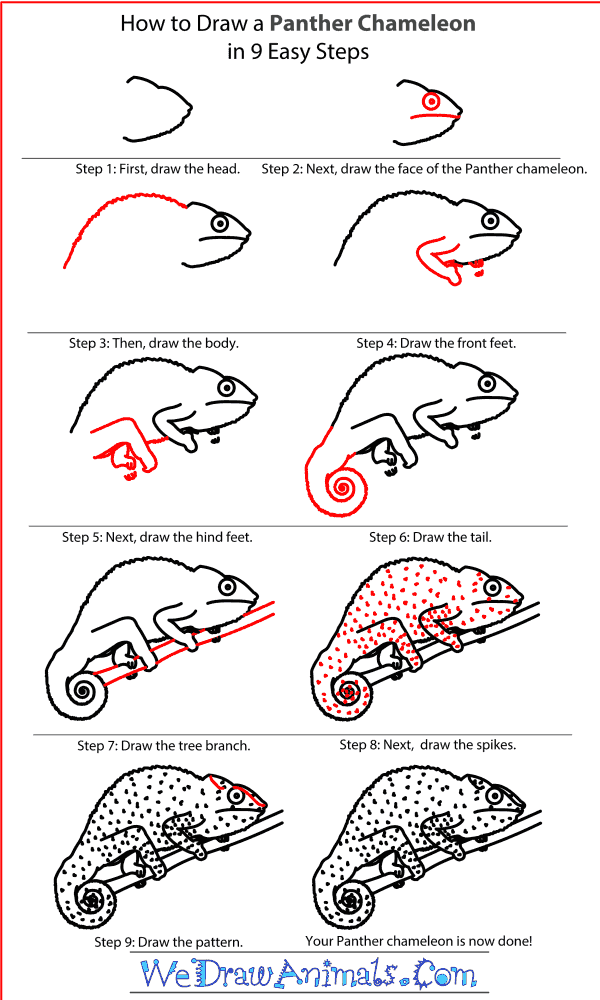In this quick tutorial you'll learn how to draw a Panther Chameleon in 9 easy steps - great for kids and novice artists.
The images above represent how your finished drawing is going to look and the steps involved.
Below are the individual steps - you can click on each one for a High Resolution printable PDF version.
At the bottom you can read some interesting facts about the Panther Chameleon.
Make sure you also check out any of the hundreds of drawing tutorials grouped by category.
How to Draw a Panther Chameleon - Step-by-Step Tutorial
Step 1: Start by drawing the outline of the head
Step 2: Draw the eye and the mouth. Draw a circle with a dot inside to make the eye and a line to make the mouth
Step 3: Draw the curved back with a jagged line sloping downward
Step 4: Now, draw the arms and hands starting next to the mouth and finishing just below the head
Step 5: Draw the back legs at the end of the back. Draw the legs crossed together. Copy the example exactly
Step 6: Draw the tail in the shape of a spiral. The tail comes out of the back and gets thinner as it spirals in
Step 7: Draw two lines underneath to make the branch of a tree. Make sure the branch is touching the hands and feet so that it looks like the chameleon is on the branch
Step 8: Draw some dots to make spikes all over the body
Step 9: Draw the final details on the face by making two lines
Interesting Facts about the PANTHER CHAMELEON
The Panther Chameleon is a member of the reptile family and the scientific term for them is Furcifer pardalis. The technical name comes from the Latin word Furci, which means “forked” and is a reference to the lizard’s split hands and feet, and the word pardalis is Latin for “leopard spots” (leopards are in the panther family) which is a reference to the animal’s skin markings. Their skin changes color depending on their mood.
Did you know?
- The animal was first documented in 1829.
- The creature can see small insects almost 32 feet away.
- They can grow up to almost 2 feet long.
- The tongue can be up to over 2 feet long.
- Their tongue can travel at 52 feet per second.
- The tongue captures food in .003 seconds.
The species are native to the northeast portion of Madagascar where it thrives in rainforests. They have hands and feet that grip thin branches like little vises and their conical eyes can rotate independently, able to see forward and backward simultaneously, with single circular eyelids. These can view ultra-violet light as insects do, as part of their total visual perception. Also, their hands and feet have sharp claws for climbing trees.










